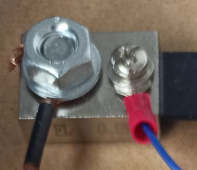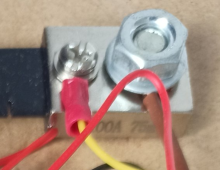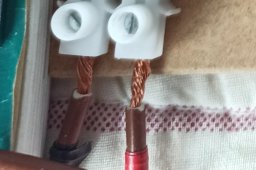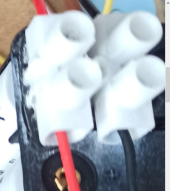I would like to share with you my balcony solar installation after 1 month of use.
It shows that solar is potentially feasible in cities or rented homes If placed on balconies and it is fairly simple.
Material:
- 2x100W flexible solar panels (16V, 32 cells)
- 600W MPPT grid-tied inverter (range: 22-60V)
- DCM meter (PZEM-15)
- 1,5mm2 copper cables
- Wood planks
- Plastic cable binders
Photos:
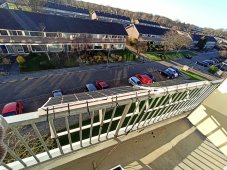
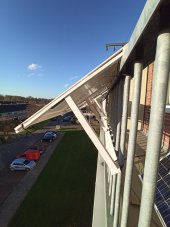
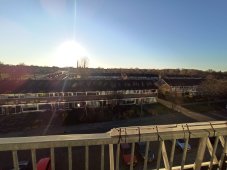
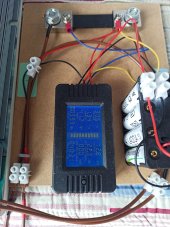
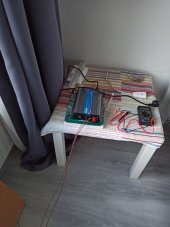
Description:
The installation is composed of two 100W flexible solar panels that weight around 2,1kg each and hang on the outer side of the balcony railings with a wooden self-made structure. The main concern at design phase was the weight of the panels and so risk prevention; they could fall. The panels are 16V (32 cells) solar panels specially selected to minimize weight and costs. A hard glass panel would give better yields but weight too much (100W: 8kg approx. each).
The wooden structure is raw would with two coatings of white paint for humidity protection. The wood is bonded with water resistant glue, then metallic screws and in specific location with elbows too. It is designed so the weight of the panels lay on the balcony railings. Since the weight is supported by the railing, I just use cable binders to fix the structure. The structure survived winds of up to 110km/h with wind gusts of up to 130km/h; that was Eunice storm.
The panels are connected in series and the 1,5mm2 cables pass through the balcony door which does not close tight and thus allow two cables to sneak in. If that was a problem, then the installation would only operate in spring, summer or so long the door may stay open without freezing the place.
Output:
The max. output in the Netherlands around March is: 0,5kWh per day
- Orientation of the panels is West (azimuth 266) and the sun starts hitting the panels over the midday around 13h. or later. The building shadows the panels in the morning.
- The panels are from Aliexpress and customers have reported a max. output of 70W per panel. I personally have not seen anything higher than 55W per panel.

The yield of the grid-tied inverter is low (80-85%); however up to now I have had a little reduction on my monthly energy bill and delivered 5kWh surplus to the grid which will be discounted from my yearly balance (net metering).
It shows that solar is potentially feasible in cities or rented homes If placed on balconies and it is fairly simple.
Material:
- 2x100W flexible solar panels (16V, 32 cells)
- 600W MPPT grid-tied inverter (range: 22-60V)
- DCM meter (PZEM-15)
- 1,5mm2 copper cables
- Wood planks
- Plastic cable binders
Photos:





Description:
The installation is composed of two 100W flexible solar panels that weight around 2,1kg each and hang on the outer side of the balcony railings with a wooden self-made structure. The main concern at design phase was the weight of the panels and so risk prevention; they could fall. The panels are 16V (32 cells) solar panels specially selected to minimize weight and costs. A hard glass panel would give better yields but weight too much (100W: 8kg approx. each).
The wooden structure is raw would with two coatings of white paint for humidity protection. The wood is bonded with water resistant glue, then metallic screws and in specific location with elbows too. It is designed so the weight of the panels lay on the balcony railings. Since the weight is supported by the railing, I just use cable binders to fix the structure. The structure survived winds of up to 110km/h with wind gusts of up to 130km/h; that was Eunice storm.
The panels are connected in series and the 1,5mm2 cables pass through the balcony door which does not close tight and thus allow two cables to sneak in. If that was a problem, then the installation would only operate in spring, summer or so long the door may stay open without freezing the place.
Output:
The max. output in the Netherlands around March is: 0,5kWh per day
- Orientation of the panels is West (azimuth 266) and the sun starts hitting the panels over the midday around 13h. or later. The building shadows the panels in the morning.
- The panels are from Aliexpress and customers have reported a max. output of 70W per panel. I personally have not seen anything higher than 55W per panel.

The yield of the grid-tied inverter is low (80-85%); however up to now I have had a little reduction on my monthly energy bill and delivered 5kWh surplus to the grid which will be discounted from my yearly balance (net metering).



